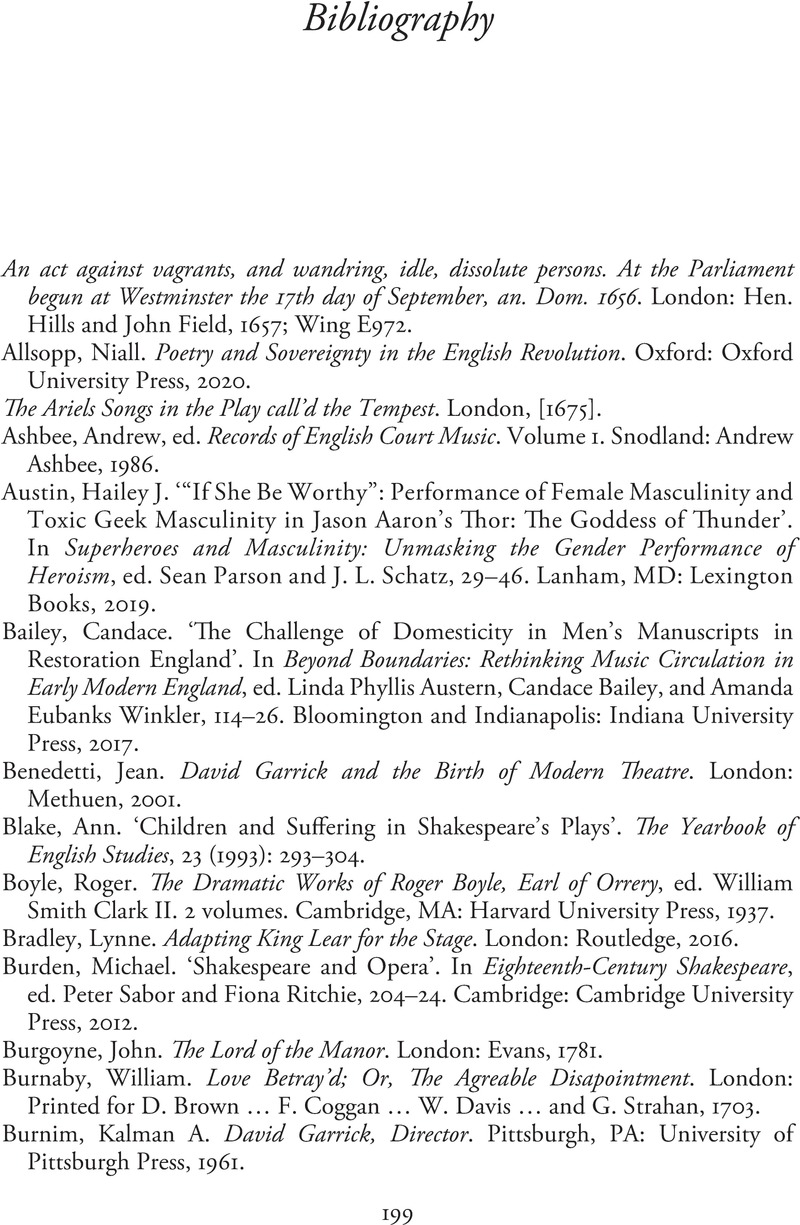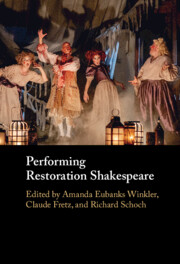Book contents
- Performing Restoration Shakespeare
- Performing Restoration Shakespeare
- Copyright page
- Contents
- Figures
- Tables
- Music Examples
- Notes on Contributors
- Foreword
- Acknowledgements
- Abbreviations
- Introduction: New Shakespeare for a New Era
- Chapter 1 From Boards to Books: The Circulation of Shakespearean Songs in Manuscript and Print during the Interregnum
- Chapter 2 Heroic Shakespeare at Lincoln’s Inn Fields
- Chapter 3 More than a Song and Dance? Identifying Matthew Locke’s Incidental Music for Macbeth
- Chapter 4 Cross-Dressing in Restoration Shakespeare: Twelfth Night and The Tempest
- Chapter 5 Performing Restoration Shakespeare in the Eighteenth Century
- Chapter 6 An Actor’s Perspective on Restoration Shakespeare
- Chapter 7 Staging Restoration Shakespeare with Restoration Music
- Chapter 8 Davenant’s Lady Macduff and the Subversion of Normative Femininity in Twenty-First-Century Performance
- Chapter 9 Facts as Ideas: The Theatricalisation of Scholarship
- Chapter 10 Syncopated Time: Staging the Restoration Tempest
- Bibliography
- Index
- References
Bibliography
Published online by Cambridge University Press: 28 January 2023
- Performing Restoration Shakespeare
- Performing Restoration Shakespeare
- Copyright page
- Contents
- Figures
- Tables
- Music Examples
- Notes on Contributors
- Foreword
- Acknowledgements
- Abbreviations
- Introduction: New Shakespeare for a New Era
- Chapter 1 From Boards to Books: The Circulation of Shakespearean Songs in Manuscript and Print during the Interregnum
- Chapter 2 Heroic Shakespeare at Lincoln’s Inn Fields
- Chapter 3 More than a Song and Dance? Identifying Matthew Locke’s Incidental Music for Macbeth
- Chapter 4 Cross-Dressing in Restoration Shakespeare: Twelfth Night and The Tempest
- Chapter 5 Performing Restoration Shakespeare in the Eighteenth Century
- Chapter 6 An Actor’s Perspective on Restoration Shakespeare
- Chapter 7 Staging Restoration Shakespeare with Restoration Music
- Chapter 8 Davenant’s Lady Macduff and the Subversion of Normative Femininity in Twenty-First-Century Performance
- Chapter 9 Facts as Ideas: The Theatricalisation of Scholarship
- Chapter 10 Syncopated Time: Staging the Restoration Tempest
- Bibliography
- Index
- References
Summary

- Type
- Chapter
- Information
- Performing Restoration Shakespeare , pp. 199 - 210Publisher: Cambridge University PressPrint publication year: 2023



